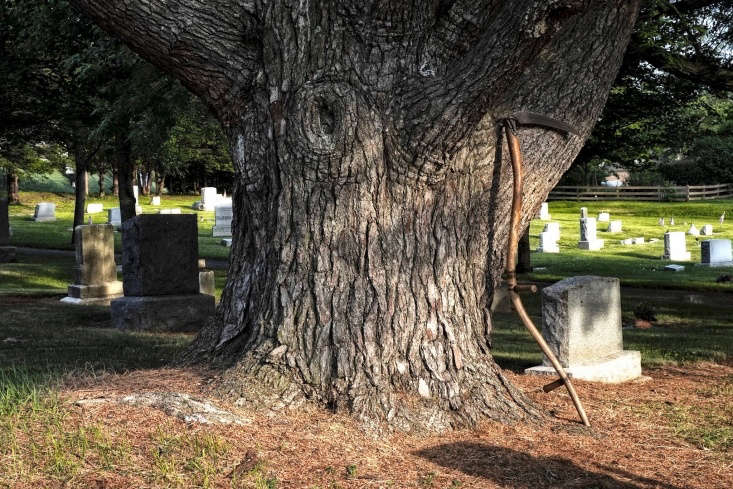Did Count Dracula have a garden? In the movie version, he seduced a victim in one—close enough. With Halloween looming, our thoughts naturally hover, bat-like, over Transylvania.
Beyond vampires, this bucolic region of central Romania is known for its picturesque villages, a rich agricultural history (nearly one third of the country’s population is employed in the farming industry), and its eerily strong hold over Prince Charles (the royal highness has a vacation guesthouse in the Transylvanian village of Zalànpatak).
Here are 10 garden ideas to steal from Transylvania:
Mossy Mystery

With its forbidding stone turrets, Bran Castle is commonly believed to have been author Bram Stoker’s inspiration for Dracula’s castle. A national landmark, the castle has a website that explains: “Bram Stoker never visited Romania. He depicted the imaginary Dracula’s castle based upon a description of Bran Castle that was available to him in turn-of-the-century Britain. Indeed, the imaginary depiction of Dracula’s Castle from the etching in the first edition of Dracula is strikingly similar to Bran Castle and no other in all of Romania.”
Get the look with heavy timbered doors and moody moss surrounding your entryway.
Secluded Courtyards

A high-walled courtyard provides protection from winds and other unwelcome weather. Even if you are not living in a fortress at the top of a steep precipice, chances are your garden could use a sheltered space.
Cornflowers

Transylvania is known for its meadows, which from a distance shimmer like deep blue pools, thanks to an abundance of native cornflowers (Centaurea cyanus, commonly known in the US as bachelor’s buttons). A perennial in USDA growing zones 8 to 10, Blue Cornflowers can be grown as annuals in colder climates; a 1-ounce packet of seeds is $6.95 from American Meadows.
Scything

In Transylvania, where a motorized lawn mower would be a novelty, a scythe remains the grass-cutting tool of choice. As Kendra noted recently in our post Trend Alert: Mowing the Lawn With a Scythe, there is much to recommend this traditional technique for trimming: “Scything is fantastic exercise for the core muscles and makes a good accompaniment to the Alexander Technique or Pilates.”
Carts and Wagons

In Transylvania, horses pull carts and wagons. In the garden, you can: a decidedly low-tech way to move earth, plants, and leaves.
Unmown Lawns

Bordering a stone path, clumps of flowers and unmown grasses soften the lines of a landscape.
Butterfly Bushes

Butterfly bushes (Buddleia) are not native to Europe, but transplants thrive throughout Transylvania. These perennial shrubs will reliably attract butterflies to your garden in USDA growing zones 5 to 9, but be warned: they have invasive tendencies.
Rustic Fences

Wood fences dot the countryside throughout Transylvania, with designs that range from simple split-rail versions to intricately braided examples. Wood is a lovely, naturalistic backdrop to foliage in a garden; see more ideas in Hardscaping 101: Woven Fences and 10 Easy Pieces: Instant Fencing.
Fruit Trees

Transylvania is famous for its orchards, where heirloom varieties of apples, pears, plums, and cherries thrive (without the use of pesticides). The takeaway: Even a small garden can benefit from a fruit trees; you’ll have flowers in spring and fruit in fall.
Savor Seed Heads

After perennial flowers stop blooming at the end of their season, leave seed heads in place to add architectural interest to a landscape and to provide food for birds and other hungry creatures in winter months.
Conifers

For year-round foliage in a landscape, include conifers and other evergreens along with deciduous trees.
N.B.: For more rustic inspiration in the garden, see:
- 10 Easy Pieces: Garden Carts and Wagons.
- Fence Hurdles and Gates from Green Man Wood Crafts.
- Before and After: A Rustic Facade Adds Curb Appeal to a Plain Jane Ranch House.










Have a Question or Comment About This Post?
Join the conversation